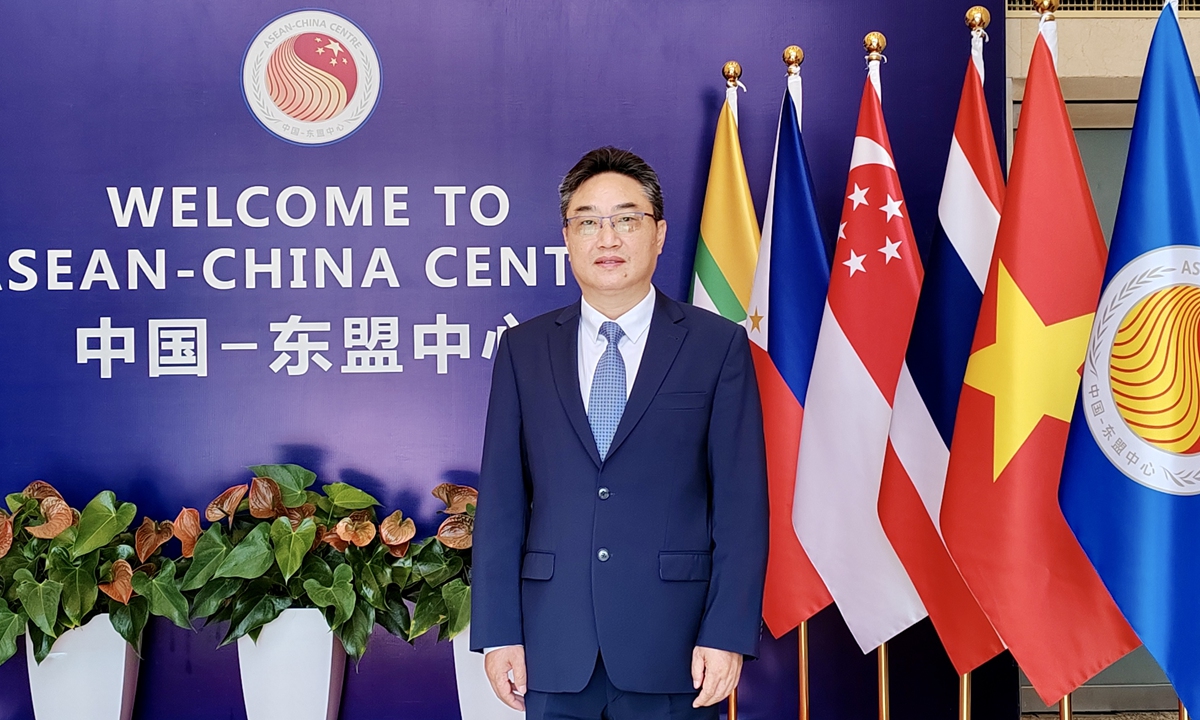
Shi Zhongjun, the Secretary-General of the ASEAN-China Center Photo: Courtesy of Shi
Editor's Note:On October 18, 2023, as the third Belt and Road Forum for International Cooperation (BRF) came to a conclusion, Chinese President Xi Jinping announced eight major steps China will take to support high-quality Belt and Road cooperation in a keynote speech. Benefiting over 150 countries, the Belt and Road Initiative (BRI) has become the most popular international public good and largest international cooperation platform in today's world.
The year 2023 marks the 10th anniversary of the BRI and 10th year since China first proposed building a closer China-ASEAN community of shared future. The ASEAN is the priority and key region for the implementation of the BRI, and is an active respondent and beneficiary of the framework.
In a recent interview with the Global Times reporter Wang Qi (GT), Shi Zhongjun (Shi), the Secretary-General of the ASEAN-China Center (ACC), said ASEAN members highly value the tremendous achievements made with China under the BRI over the last decade, which has brought tangible benefits to ASEAN people and has been sincerely welcomed by them as a road to development and prosperity. He said ASEAN members generally look forward to the continued promotion of mutually beneficial cooperation, rather than becoming geopolitical pawns. All-round cooperation between China and ASEAN has also injected more positive energy into regional and global peace, stability, and prosperity amid global uncertainties and chaos.
GT: How do you interpret the outcome of the Third Belt and Road Forum for International Cooperation (BRF) and what is the response from ASEAN members?
Shi: The third BRF has just been successfully concluded, with representatives from 151 countries and 41 international organizations participating, and more than 10,000 registered participants, which fully demonstrates that the BRI has taken root in people's hearts worldwide, and the global influence of the concept is increasing.
President Xi Jinping met with heads of state, including leaders of ASEAN members, to reaffirm the broad consensus to continue to build a high-quality BRI. A total of 458 outcomes were delivered during the BRF and 369 practical collaboration projects have been inked, of which nearly 80, or more than one-fifth, are related to ASEAN members. These outcomes have drawn a new blueprint, opened a new phase, and injected new momentum into the BRI's future.
I've noticed that the leaders of the participating ASEAN members highly value the tremendous achievements made in the last 10 years of the joint construction of the BRI. They have expressed their willingness to continue to participate in the BRI, and hope that more pragmatic projects that are beneficial to the people will be implemented. They also welcome more Chinese investment to maintain the positive momentum of high-quality and inclusive development.
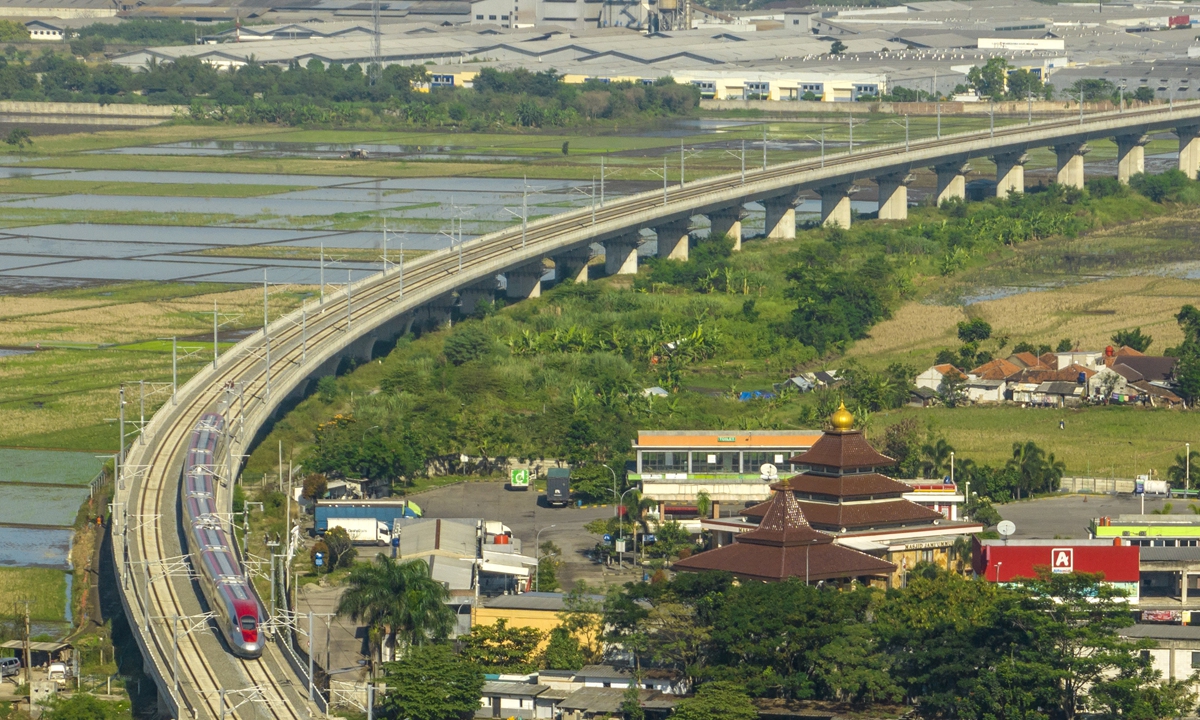
The Jakarta-Bandung High-Speed Railway (HSR) Photo: IC
GT: What can we expect from future cooperation between China and the ASEAN, and what roles can the ACC play in this regard?
Shi: China and ASEAN members will work together to implement the important outcomes of the BRF.
First, we will further promote the BRI to dovetail with the Master Plan on ASEAN Connectivity 2025, and the development strategies of each ASEAN member. Second, we will continue to strengthen infrastructure development in railways, highways, ports, airports, electricity, and communications to build a three-dimensional network of connectivity. Third, we will further enhance economic and trade exchanges, stabilize and smooth the supply chain and industrial chain, and cultivate new growth points for cooperation in emerging areas such as the digital economy, green transformation, and scientific and technological innovation.
Regarding promoting policy communication, the ACC will continue to maintain close communication with government departments and embassies of China and ASEAN members, and promote exchanges and docking of policies through co-organizing briefings and other activities.
In terms of promoting trade, the ACC will continue to build platforms, actively matchmaking enterprises and products from both sides to enter each other's markets, inviting ASEAN business to participate in economic and trade activities in China, and organizing face-to-face exchanges between governments, businessmen, and enterprises from the two sides, so as to facilitate the landing of more projects.
When it comes to promoting people-to-people exchanges, the ACC will continue to actively carry out exchange projects in the fields of education, culture, youth, tourism, and media between China and the ASEAN, to promote tourism recovery, and cultivate a positive atmosphere of public opinion for the China-ASEAN relationship.
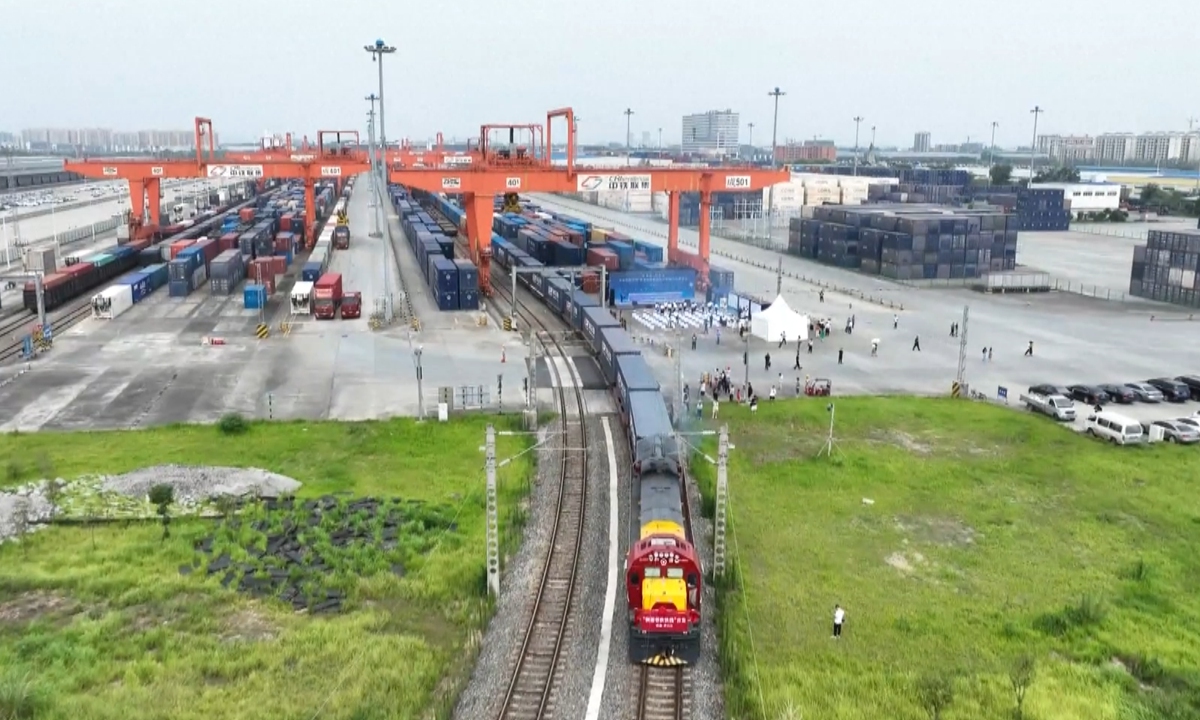
The Lancang-Mekong-Sichuan Express which enables direct railway transportation from Southeast Asia to Europe Photo: VCG
GT: How do you view the cooperation between China and the ASEAN under the BRI in the last decade? What does it mean for the development of ASEAN members?
Shi: China and most ASEAN members are developing countries, which makes development a common goal for both sides. Over the last decade, China and ASEAN members have continuously strengthened their strategic synergizing, and have achieved fruitful results and joined hands to build a high-quality BRI model.
China and all 10 ASEAN members have signed bilateral cooperation documents on the joint construction of the BRI. The two sides have been each other's largest trading partner for three consecutive years and are accelerating version 3.0 of the China-ASEAN free trade agreement.
Facts have proven that the joint construction of the BRI has brought ASEAN members greater opportunities for cooperation and development dividends, as well as a greater sense of gain and happiness to the people on both sides.
For instance, the China-Laos Railway. It has been hailed by the Lao people as a "landmark project" that has transformed Laos from a "land-locked country" to a "land-linked country."
The railway has been in stable operation for 22 months, carrying more than 20 million passengers and 26.8 million tons of goods. Through the railway, fresh fruits from Southeast Asia can be delivered to Chinese consumers in a shorter period of time and at a lower cost. The project has provided more than 110,000 jobs for the Lao people and trained local technical and managerial staff, leading to the economic and social development of Laos.
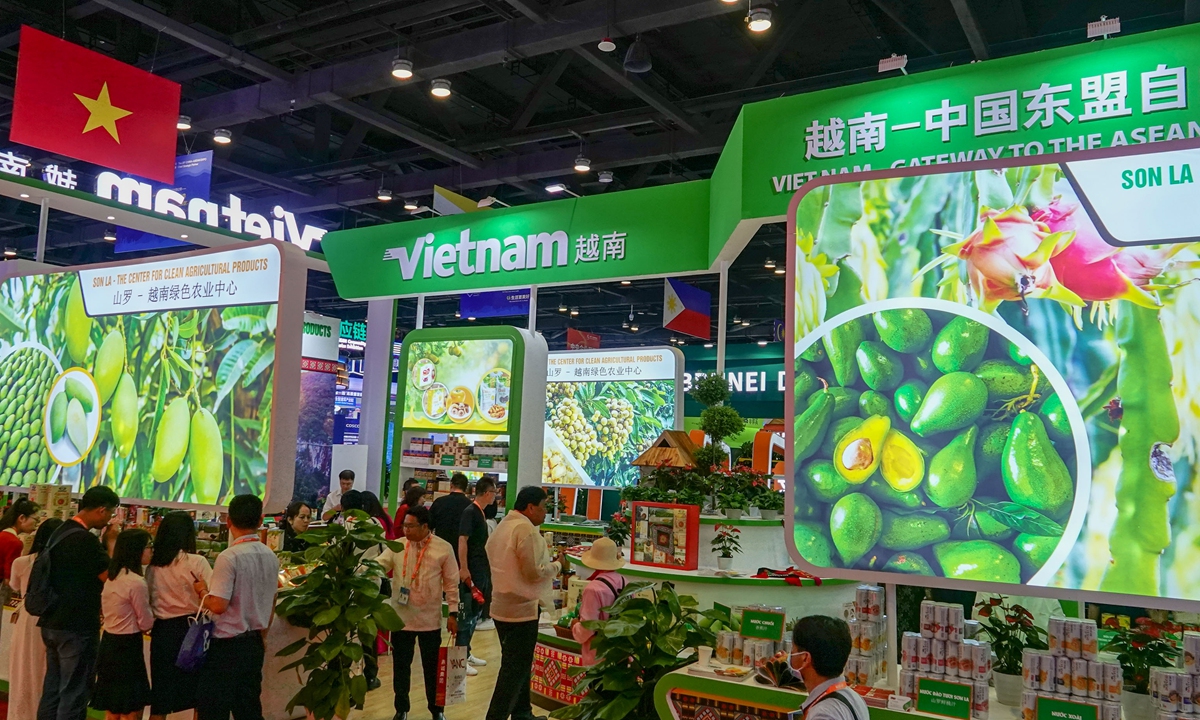
Visitors sample Vietnamese agricultural products at the Vietnam exhibition area at the China-ASEAN Expo, on September 17, 2023. Photo: VCG
GT: Since you became the Secretary-General of the ACC in September 2022, you have visited a number of ASEAN members. What are the attitudes and feelings of ASEAN members toward China and the BRI? What has impressed you the most after one year in office?
Shi: This year, I have visited six ASEAN members, including Singapore, Indonesia, Malaysia, the Philippines, Cambodia, and Myanmar, and met with high-level officials from the foreign affairs, economic and trade, investment, education, culture, and tourism departments of the host countries, as well as exchanging views with people from all walks of life, such as local chambers of commerce, universities, think tanks, and the media.
I feel that all sectors of ASEAN members welcome the BRI and highly appreciate the results achieved. ASEAN members generally believe that jointly building the BRI can improve the infrastructure of ASEAN members, narrow the development gap between regions, promote the region's post-COVID recovery, and effectively benefit the local people.
I have a deep impression that locals often talk about two BRI projects. The first is the Jakarta-Bandung High-Speed Railway, which has just come into operation.
When I was in Jakarta, many local people said to me, "In the 1990s, it took a whole day to go to Bandung, but now it only takes 40 minutes through the high-speed railway, which is incredible!"
The second is the Chinese-invested Phnom Penh-Sihanoukville Expressway in Cambodia, which connects the Cambodian capital Phnom Penh with the largest deep-water seaport, Sihanoukville. Locals in Phnom Penh say that it takes more than 5 hours to drive between the two places, but now it takes less than 2 hours, which brings great convenience to people.
At the same time, some media sources and think tanks in ASEAN members have told me that some ordinary people still do not have a comprehensive understanding of the BRI. In the future, the two sides should carry out more economic and livelihood projects, especially small but practical projects, so that more people in the ASEAN can share the dividends of the BRI.
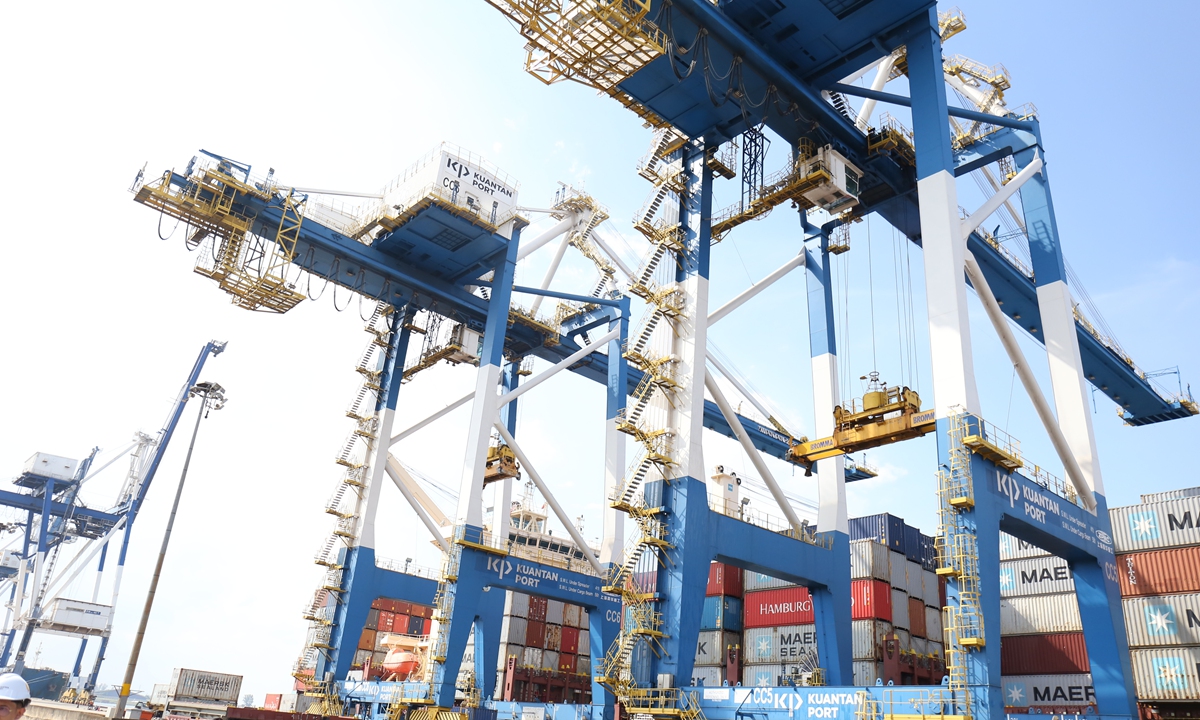
The Malaysia-China Kuantan Industrial Park in Malaysia Photo: Zhao Juecheng/GT
GT: Under the US "Indo-Pacific Strategy," more external factors are intervening in the Asia-Pacific region. What is the importance of practical cooperation between China and the ASEAN under the BRI to maintain the peace, stability, and prosperity of the region?
Shi: China-ASEAN cooperation under the BRI has brought tangible benefits to ASEAN people and has been sincerely welcomed by them as a way to development and prosperity. ASEAN members generally look forward to continuing to promote mutually beneficial cooperation, rather than becoming geopolitical pawns. Regional countries are well aware of the motives and intentions of the interfering external forces.
At present, the recovery of the global economy from the pandemic is still generally weak, while the geopolitical situation is still strained and chaotic, with the issues of inflation, environment, food, and energy security still complex and grim. This poses a number of challenges to regional peace and stability.
The jointly construction of BRI has allowed for a large number of infrastructure projects to take root in the ASEAN, which not only improves local production and the living environment, but also effectively reduces the cost of participation in international trade for ASEAN members, strengthens their ability to integrate into the world economy, and stimulates the region's potential for greater development.
In addition, China and the ASEAN have been cooperating on trade facilitation, accelerating the process of regional economic integration, promoting the stability and smooth flow of the regional and global industrial chain supply chain, and injecting strong impetus into a steady recovery after the global pandemic.
In general, the all-round cooperation between China and the ASEAN under the BRI has injected more positive energy into regional and global peace, stability, and prosperity, and has become the greatest certainty amid current global uncertainties.
GT: What are the lessons that partners can learn from the successful China-ASEAN cooperation under the BRI?
Shi: China and ASEAN members are natural fellow travelers in the construction of the BRI, and have been working hand in hand for 10 years, achieving fruitful results along the way and bringing great benefits to the people of both sides. I believe that there are at least three aspects of experience that are worth learning from:
First, focusing on strategic synergizes. Over the last decade, the BRI has not only been designed to dovetail with the Master Plan on ASEAN Connectivity 2025, but also has been customized to dovetail with the development strategies of each ASEAN member.
Second, we insist on mutual benefit and win-win cooperation. China and ASEAN members have been practicing the principle of joint construction and sharing and have deepened cooperation in these fields with complementary advantages.
Third, it's always keeping pace with the times. Both sides attach importance to "hard connectivity" in infrastructure, "soft connectivity" in education, culture, and tourism, and now, the "new connectivity" in green, digital, and artificial intelligence.
The core idea is to ensure that cooperation remains at the forefront of innovation, leading the trend, and truly benefiting the region.








